Table of Contents
About Panch Kedar Yatra
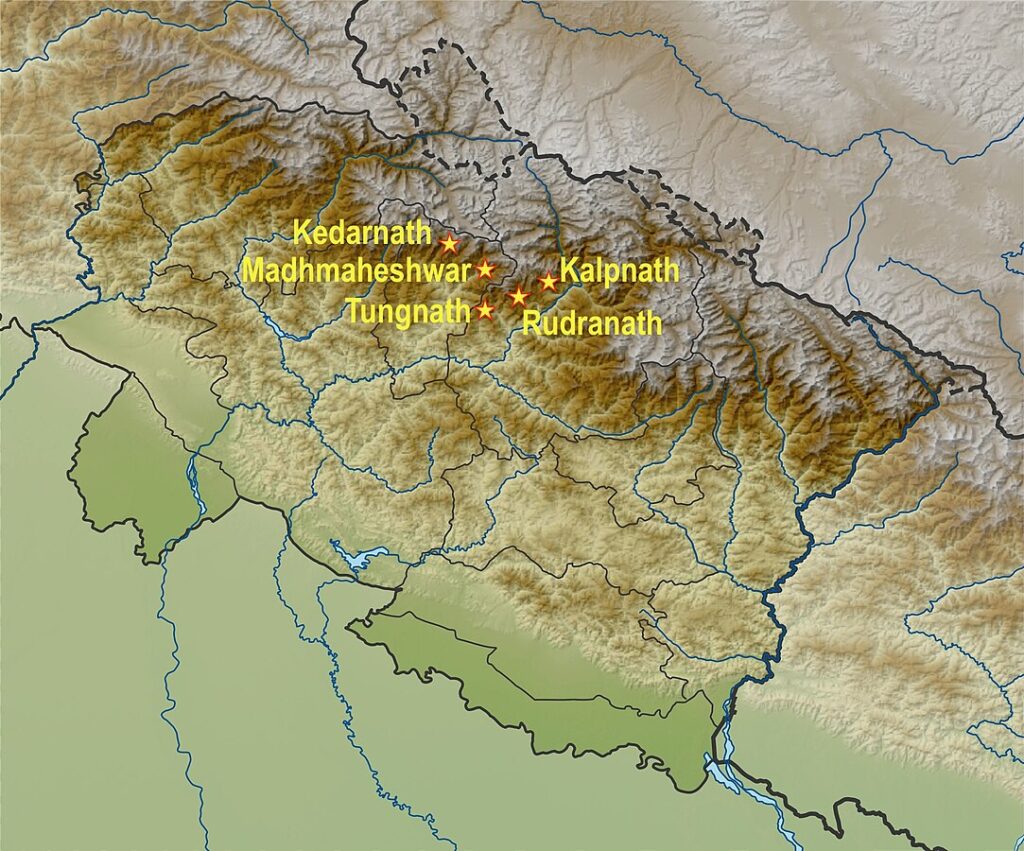
Trekking deep into the snow–clad mountains of the Garhwal Himalayas in Uttarakhand, it is one of the holiest pilgrim treks in India. This revered journey consists of visiting five Lord Shiva temples — Kedarnath, Tungnath, Rudranath, Madhyamaheshwar and Kalpeshwar — known as the Panch Kedar, which have been associated with different parts of his image.
Based on the stories in Mahabharata, the yatra recounts the tale of the Pandavas asking Lord Shiva to lift a curse but the Shiva took shelter in the form of a bull and went across various places in these five sites. It is a quieter, more serene pilgrimage, free of the commercial pomp and show of the Char Dham Yatra and is marked by magnificent vistas, calm forests, and traditions that go back to ancient times.
If you are a religious traveler, or nature lover or just an adventure enthusiast craving for a spiritual journey, the Panch Kedar Yatra gives you a good combination of peace and challenge.
Panch Kedar Temples & Their Importance
Kedarnath Temple
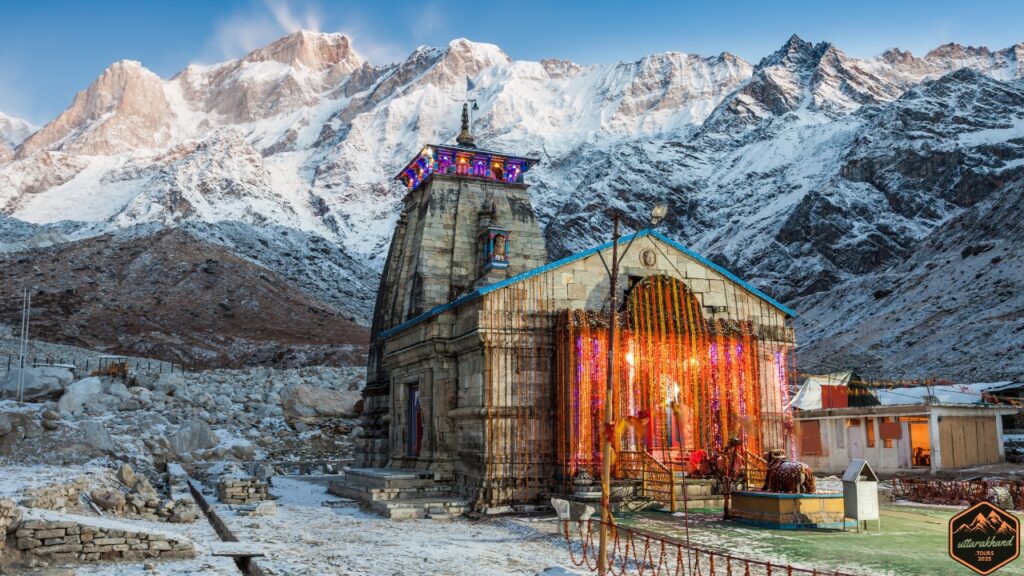
Sitting on a high altitude at an elevation of 3,583 metres, the Kedarnath Temple is the first and the most celebrated stop on the Panch Kedar Yatra. The temple, situated beside the gushing Mandakini river, is among the 12 Jyotirlingas – revered reflections of Lord Shiva.
Legend has it that the temple was built by the Pandavas and was revived by Adi Shankaracharya and it receives lakhs of pilgrims every year. The 16-kilometer journey from Gaurikund is spiritually invigorating but physically taxing.
The temple opens every year in April and closes in November. It is believed that the idol is taken to Ukhimath by the priest of the temple & a special puja is performed and the temple remains closed for the winter.
Tungnath Temple
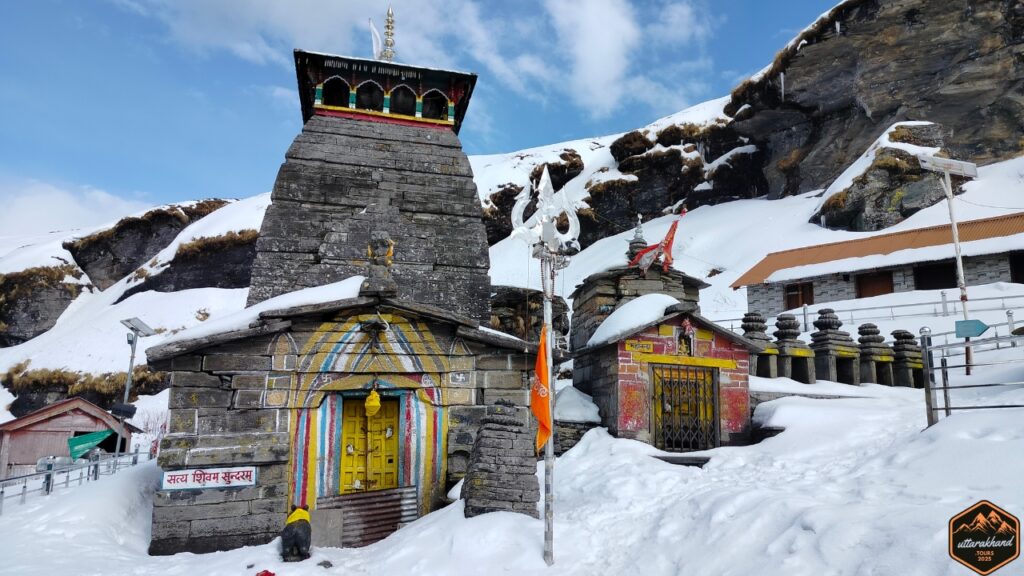
Tungnath Temple, perched at an elevation of 3,680m, is believed to be the highest Hindu shrine of Lord Shiva. His arms are represented by this old temple located merely 4 kilometers from Chopta, and it is situated amidst rhododendron forests and alpine meadows.
The trek to the nearby Chandrashila peak, which stands in the winter shadow of the temple, gives picturesque views of the entire Himalayas ranging from Nanda Devi to Chaukhamba peaks. It is a pilgrimage not only for trekkers but also spiritual seekers.
Rudranath Temple
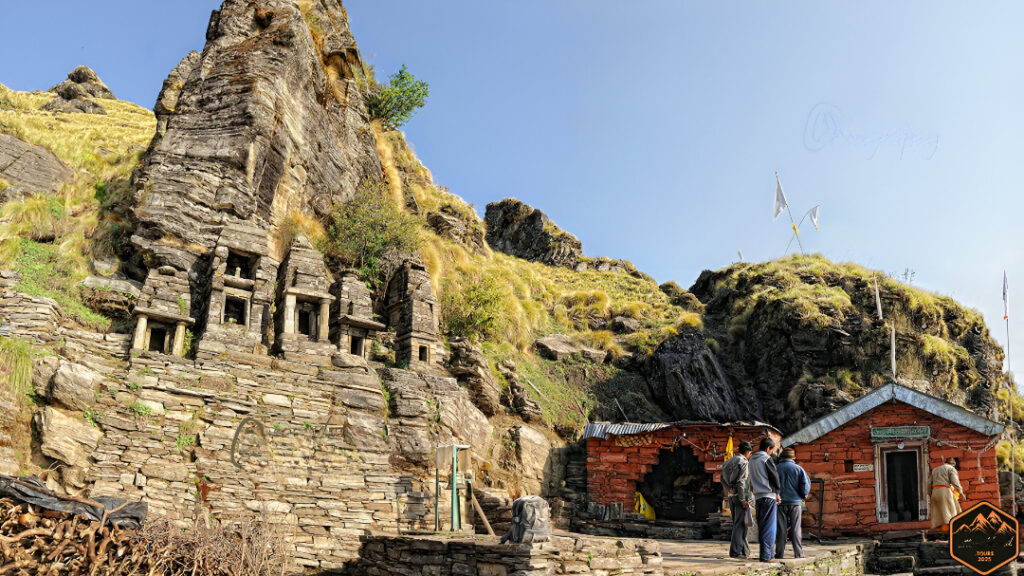
Hidden in the jungle-laden valleys of Garhwal, Rudranath Temple is the face of Lord Shiva. At an altitude of 2,286 meters, it is a tough journey of 20 kilometers from Sagar village.
The path covers sacred water bodies like Surya Kund, Chandra Kund, and Mana Kund in the journey to the destination. It is a test as well as a purifying pilgrimage, and ancestral prayers are offered at every place of halt.
Madhyamaheshwar Temple
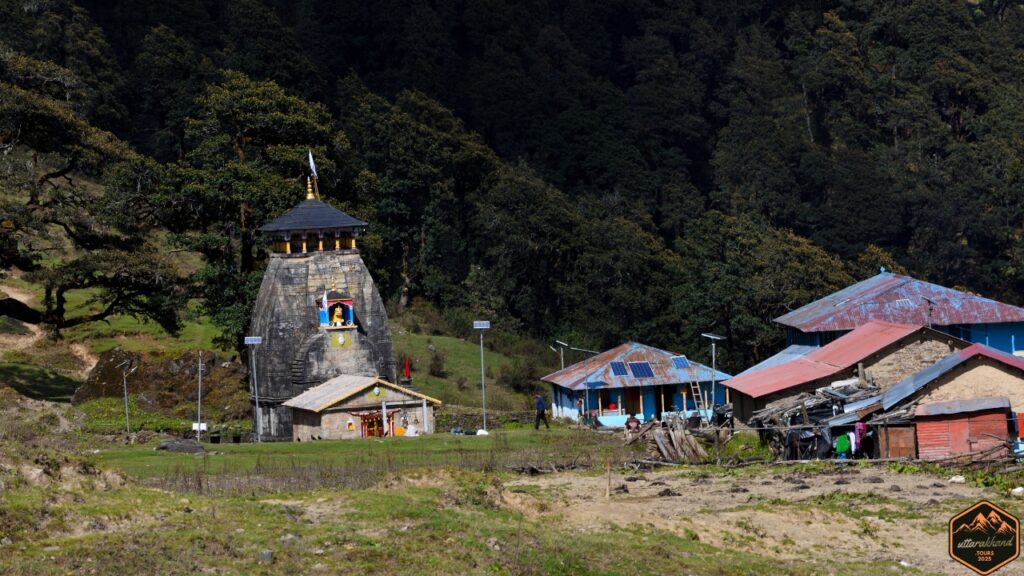
Madhyamaheshwar Temple at an elevation of 3,497 meters represents the navel of Lord Shiva. Famous for its peaceful and serene atmosphere and offering breathtaking views of Chaukhamba peaks, this temple can be approached through 16–19 km of trekking route from Ransi or Gaundar.
As with the other temples in the Panch Kedar Circuit, the priests and the murtis (idols) of Kedarnath are carried down to Ukhimath in an event of ritual procession during the winter.
Kalpeshwar Temple
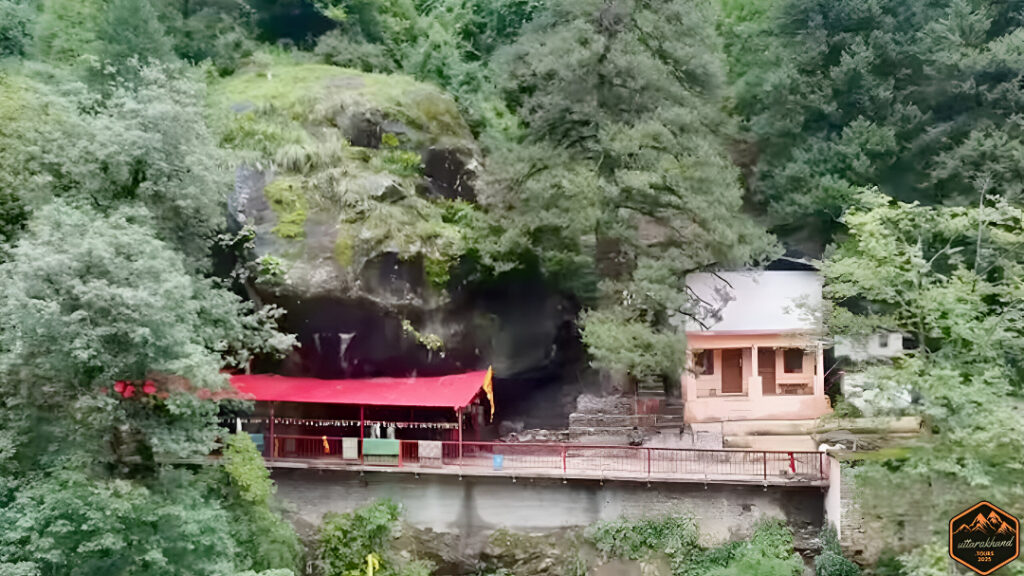
The temple of Kalpeshwar is the only Panch Kedar temple open throughout the year. Dedicated to Lord Shiva’s hair (jata), this easy temple is located at an altitude of 2,200 meters near Urgam.
Its close proximity to the confluence of the Alaknanda and Kalpganga rivers enhances the meditative appeal of the spot. According to legends, Rishis like Arghya and Durvasha had meditated here under the Kalpavriksha tree.
Panch Kedar Trek Route & Trek Itineraries
Traditionally the yatra takes this track: Kedarnath → Tungnath → Rudranath → Madhyamaheshwar → Kalpeshwar
The distance of routes ranges from 70 km to 90 km, and the journey usually takes place over 10–12 days covering 5 Kedar, including rest and acclimatization days.
The pilgrims mostly do yatra from Gaurikund to Kedarnath afoot, road and foot via Chopta (Sagar), Ransi and Urgam, then reach the path of Upnidhaul, Khirensu, Thaanche, and Phodung followed by crossing several mountains, hills, and beautiful valleys. Simple guesthouses are available en route, especially at Chopta and Sagar.
Best Time to Go on Panch Kedar Yatra
The best time to visit Panch Kedar is from May–June and September–October.
Avoid visiting in monsoon (July–August) because of probable landslides. All temples are snowbound during December – April, except Kalpeshwar, which remains open.
Tips for Travel to Panch Kedar
- Get in shape with hill training and cardio.
- Take warm clothes, rain cover, gloves, sunglasses, and good trekking shoes.
- Keep hydrated, and carry water purifier tablets.
- Inform local police or homestay hosts about your plans.
- Be eco-friendly: do not litter.
- Employ local guides for safety and community support.
- Carry cash — ATMs are rare past Gaurikund and Chopta.
- Follow temple etiquette.
Accommodations & Amenities
- Gaurikund: Budget hotels and ashrams
- Chopta: Ecotels and forest huts
- Sagar & Ransi: Guest houses and dharamshalas
- Urgam: Campsites with riverside huts or lodges
Book in advance during high season.
Cultural & Spiritual Essence
The Panch Kedar Yatra is more than travel — it’s a spiritual journey.
Strength, wisdom, transformation, devotion, and purity – each temple represents a different aspect of Lord Shiva.
Aartis, temple music, homas, and community meals sanctify the quest. Local fairs like Sravan Fair and Raksha Bandhan at Rudranath showcase the region’s culture.
Why Panch Kedar Yatra Is a Must for Your Bucket List
This pilgrimage is life-changing — a blend of faith, adventure, and nature. It provides an experience that transcends even the most famous tourist destinations.
If you’re seeking a journey that tests your body, nourishes your soul, and connects you with India’s ancient roots, the Panch Kedar Yatra must be on your list.
Final Thoughts
The Panch Kedar Yatra is not just a trek — it’s a transformational expedition through the Himalayas.
May this guide be your sacred companion, filled with peace, strength, and enlightenment.
Frequently Asked Questions (FAQ)
Q: What distance will the Panch Kedar Yatra cover in total?
Around 90 kilometers, usually completed within 10–12 days.
Q: What temple is the hardest to get to?
Rudranath Temple, due to its remote location.
Q: Can I travel to Panch Kedar Yatra in winter?
All temples are closed except Kalpeshwar during Dec–Apr.
Q: Can I do the Yatra without a guide?
Yes, but hiring a local guide is safer and helpful.
Q: Are there age restrictions?
No official limit, but consult a doctor if elderly or traveling with kids.
Q: When is the best time for the Yatra?
May–June and Sept–Oct.
Q: Is prior trekking experience required?
Not required, but recommended. Fitness and stamina are key.
Q: Are there lodgings on the route?
Yes, guesthouses, homestays, and campsites in villages.
Q: Should I use a guide?
A: Highly recommended for safety and navigation.
Q: Can we use mobile networks?
Poor or no signal in most places. Carry a power bank.
Q: Can families/kids do the Yatra?
Older teens and healthy adults can; not suitable for small children.
Q: Is there a specific temple sequence?
Yes: Kedarnath → Tungnath → Rudranath → Madhyamaheshwar → Kalpeshwar.
Q: What should I carry?
A: Warm clothes, trekking gear, first-aid, water, snacks, cash.
Q: Are permits needed?
No special permits, but register with local authorities.
Q: Are tour packages available?
Yes, several operators offer Panch Kedar Yatra packages.
Q: Can I do the Yatra by car or bike?
A: Vehicles can reach base villages; trekking is necessary to temples.
For more travel guides and spiritual journeys, stay connected with Uttarakhand.tours.



